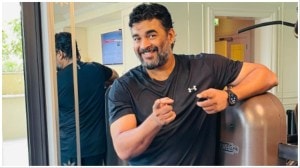- India
- International
JEE Advanced: Why there are still fewer girls in IITs?
JEE Advanced: The number of females appearing and clearing the JEE Advanced is low as compared to male candidates. Out of those who are offered admission at IITs, many females opt out due to social constraints - despite supernumerary seats and separate merit list. Experts claim the situation can be improved by having equal opportunities and training at the school-level.
 The skewed female ratio impacts males students too, says expert. (Representational Image)
The skewed female ratio impacts males students too, says expert. (Representational Image)
JEE Advanced: Even as they regularly outshine boys in the board exams, the performance of girls in Joint Entrance Examination (JEE) Advanced — a competitive test for admission to the Indian Institutes of Technology (IITs) – remains poor. Though this year saw a marginal improvement in their pass percentage – from 13.83 per cent in 2018 to 16.10 per cent in 2019 — the trend is in contrast to their performance in the school-level STEM subjects. This year, 26.03 per cent of the boys who appeared for the JEE Advanced cleared the test; last year, the number was at 22.4 per cent.
Significantly, a girl is yet to grab the JEE Advanced top rank. This year, the All India Rank (AIR) 1 was once again secured by a boy. The top-ranking girl was at AIR 10. In 2018, the top-ranking girl was AIR 6 – which was the best performance in the last five years. The 2017 and 2016 JEE Advanced girl topper was AIR 35 and AIR 133, respectively.
Read| No JEE Main, reserved seats: Yet IITs fail to woo foreign students
Timothy A. Gonsalves, Director, IIT Mandi and head of the committee which recommended supernumerary seats for girls at IITs, said the ability to appear for the entrance exam is lacking in girls. “The core problem is that females do not tend to get training in attempting a competitive exam as parents are reluctant to send their daughters to a coaching institute far from home or which has late hours of studying. The technique to attempt a competitive exam is different than that of board exams, it requires more of risk-taking abilities. Going by traditional standards, girls are not only asked to perform household chores but are also trained to be more thorough with their approach as compared to boys which make them guess answers less, take lesser risks and hence result in poorer performance in competitive exams.”
Among the girls who clear the JEE Advanced exams, those who opt for admission at IITs is way lesser than boys. The rate of qualifying girl candidates joining IITs remained less than 10 per cent (through gender-neutral seats). While the seat allocation is still on for this year, in 2018, out of a total of 1,780 girl students selected for regular courses only eight got seats through the gender-neutral pool of seats, according to the official data. In 2017, a total of 995 (nine per cent of total seats) girl candidates were offered admission across all IITs. In 2016, as many as 30.40 per cent of boys were offered admission against 18.53 per cent girls. Further, only 847 (8 per cent of total seats) girl candidates were enrolled across IITs, as per the official data.

Read| JEE not the right way to chose engineers, says former IIT director
To fill this gap, 800 supernumerary seats were created for girls – implying that additional seats were created for females exclusively, however, the number of girls continues to remain low. “Girls tend to fill lesser options as compared to boys as they restrict themselves in terms of areas and centres to apply at. By creating supernumerary seats, we aimed to increase the chances of a girl candidate getting an IIT closer to home; so that they do not lose on chances because of social constraints,” said Gonsalves.
Sumeet Agarwal, nodal officer for JEE Advanced female helpline at IIT-Delhi, told indianexpress.com, “The rate of female candidates joining IITs was lower than 10 per cent before introducing the supernumerary seats. Even till date, we get calls enquiring about branches of science which are better for girls. Parents not only feel hesitant in sending their daughters to far-off campuses but also think that some branches of science are not suited for women. They would rather have their ward enrolled in a college in their vicinity that at a non-metro IIT.”
Read| Why are JEE Advanced toppers picking IIT-Bombay over NIRF rank 1 IIT-Madras?
According to Gonsalves, out of the total number of the women population (eligible for JEE Advanced) of 40 per cent, as many as 30 per cent opt for STEM-related careers and 20 per cent of them go for National Institute of Technology (NITs) and only eight per cent choose IITs. This, he said, is still better than the western countries. “At the school level, girls should be encouraged and given training in skills to attempt a competitive exam which includes risk-taking abilities, pressure management etc. It needs to be ensured that the traditional gender role distribution does not interfere with their education.”
Lopamudra Giri, Convener of Women’s Cell at IIT Hyderabad, said while there are a number of steps being taken to improve female enrolment and for their safety and sensitization, more needs to be done. “The skewed gender ratio at IITs has more impact on boys than girls. While we run sensitization programmes for them, we often find male students struggling to adjust in the workplace environment which has more participation from women at all levels, as compared to IITs. What they might be considering normal behaviour might not be considered as professionalism, what are expectations of women are often not conveyed to men very clearly. So we run several sensitization programmes where we start from as basic as the definition of harassment. We have experts from gender studies giving lectures to our students.”
She adds, “The issue for girls starts early on. We need to tap them young, though it is difficult for IITs to reach school levels, we are trying to engage young students by calling them to IITs, giving them awareness and training right from class 9.”
Apr 25: Latest News
- 01
- 02
- 03
- 04
- 05







































